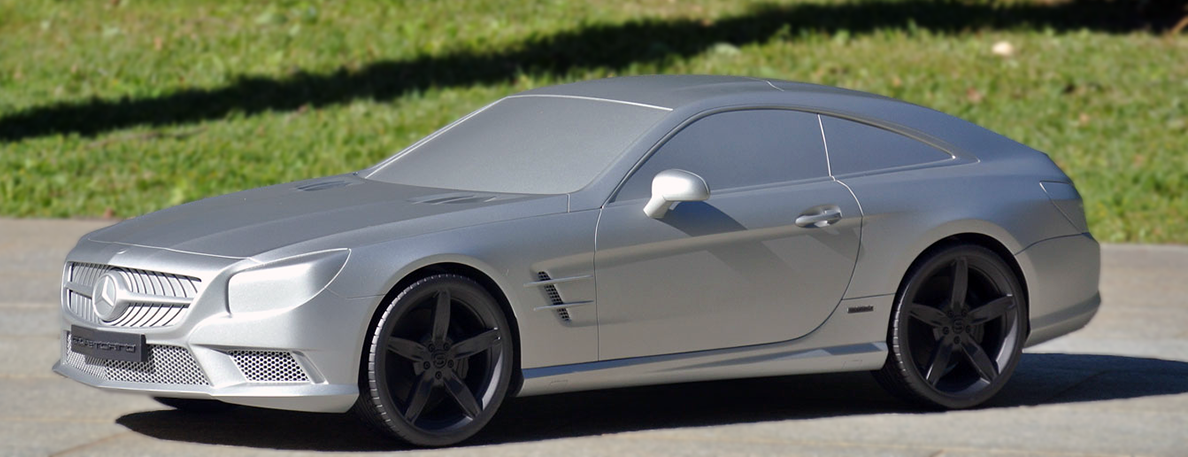I am constantly amazed by how widespread the use of 3D printing is already. Almost every day I find out about new companies that I did not know about and that have been operating in the rapid prototyping sector for years. Companies that have the ability to create final, functioning prototypes for some of the best known manufacturers in the world. Skorpion Engineering is one of these companies.
Founded by Italo Moriggi, who in the past has helped expand Materialise’s business in Italy, the company is based in Milan and mostly works with brands such as Lamborghini (their top client), Ferrari, Mercedes and Ducati in the automotive sector, developing parts for concept cars and fully functional prototypes. The company also has another “soul”, working with fashion brands such as Gucci, Fendi and Bottega Veneta on intricate and unique window displays.
Through its international structure, which includes a factory in Portugal and production centers in Turin, Austria and Milan (and a commercial office in Germany), Skorpion implements all the main 3D printing technologies, including SLS, PolyJet and FDM. SLA is offered through its own version of Materialise’s Mammoth, meaning the company is capable of providing 3D printed resin models as large as 2000x1000x1000 mm (two cubic meters) using its own, internally developed materials. These, Italo Moriggi assures me, are high performance and include NewWhite, ABS-like, transparent and high temperature resistant resins.
“Our role is to understand what a company needs and follow them from design all the way through to production,” Moriggi tells me as I meet him in their Milan office. “We are able to mix technologies, suggest the best course of action and apply a very wide range of different finishes, something many seem to leave out.”
Walking through the Skorpion office one can’t help but see the many innovative light fixtures and supercar miniature models, from Mercedes (which I was allowed to photograph) to Lamborghinis (which I was not allowed to photograph). Both were printed in what I would guess is a 1:5 scale, as a single object, inside the giant SLA 3D printers, integrating a complex geometrical internal structure that optimizes integrity while minimizing the quantity of material used and thus the object’s weight.
Thorughout the laboratory I see a large Objet 350 hard at work, and a couple of expensive looking contact 3D scanners, as well as CNC mills and vacuum casting machines. “Along with our co-desgin activity, our main added value services are in the in-depth knowledge of top materials, both for the actual 3D printing and the finishing aspects, which we have patented specifically for large dimension, robust, functional objects,” Moriggi says. This means the company has the technical capabilities and the know-how to mill an entire concept car and it can apply finishes that range from real wood to painting and metal plating.
Skorpion developed finishing processes that can increase the objects mechanical properties. for example, together with top car design studio Pininfarina, they created the rear wing on the new Ferrari F60 America (only ten of which were made), by implementing a process that sees the part covered by applying carbon fiber inside an autoclave (a high pressure chamber), thus effectively creating a 3D printed part that integrates composite materials.
These are only a few of Skorpion’s ongoing projects. “We do not work on quantity as much as on quality. This means we do not need to constantly have the machine’s running, we just use them as tools to offer the highest possible quality in our prototypes and products.” One more interesting area of work is the medical field, where the company offers its own version of Materialise’s HeartPrint service.

Making anything, from a heart model in four days to a Lamborghini headlight or a Gucci design shop window, is not something that anyone can do but, thanks to 3D printing and digital manufacturing technologies, it is now something that can be done by companies like Skorpion Engineering, with a team of only a few highly skilled individuals.






